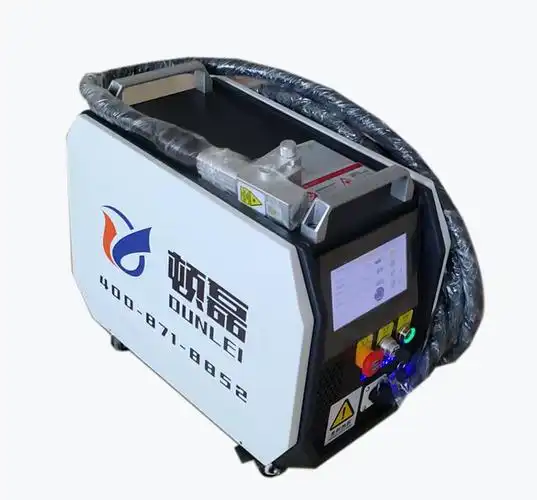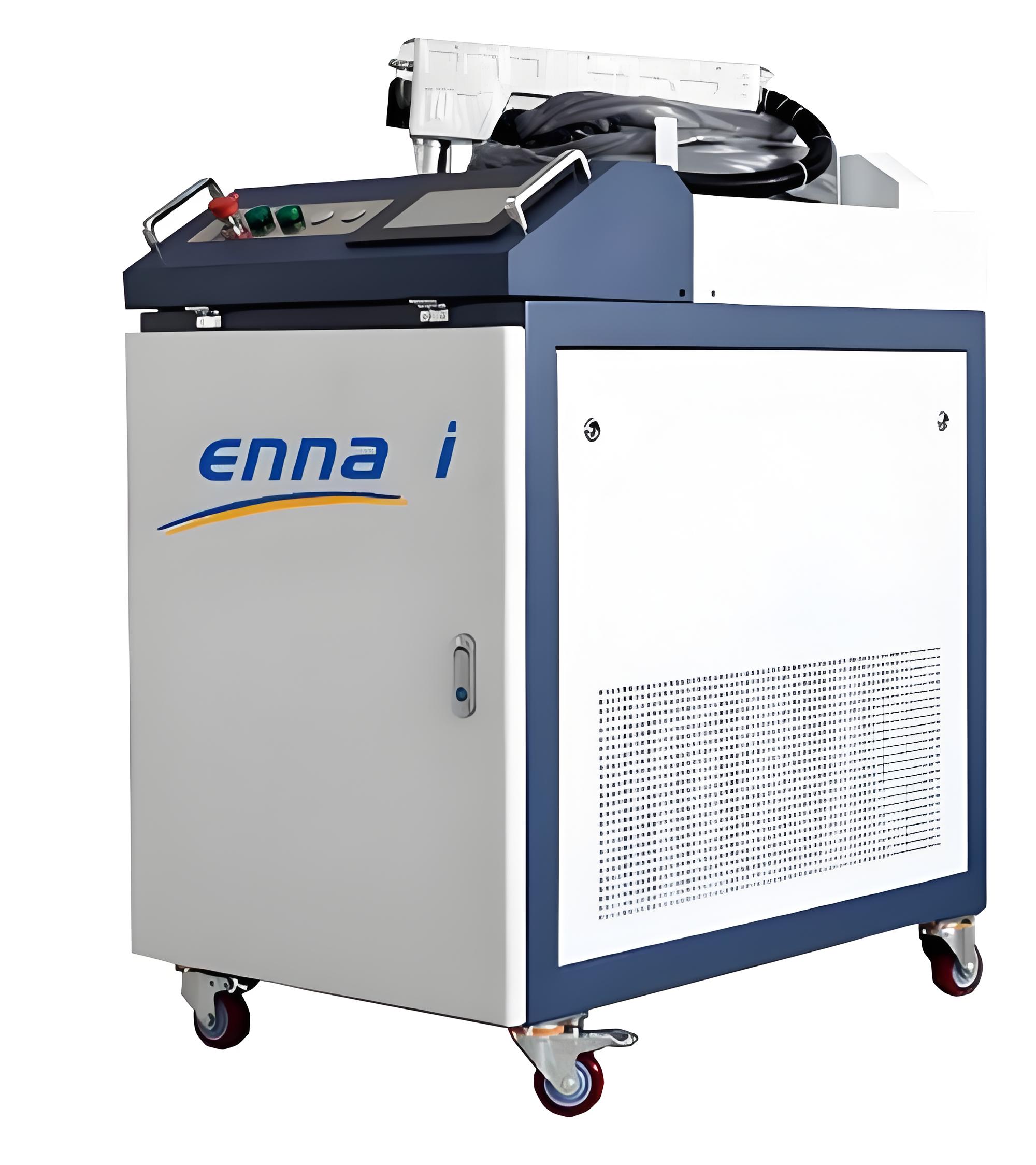As someone who has been immersed in the metal processing and surface treatment industry for years, I understand how rust removal can be both a technical and labor-intensive task. The advent of laser rust removal machines has been a game-changer, offering efficiency, environmental friendliness, and non-destructive benefits that have garnered widespread attention. However, a common question arises after using a laser rust removal machine: Does the surface need polishing afterward? Today, drawing from my hands-on experience and technical insights, I’ll address this question thoroughly and share practical tips to make your rust removal process more effective and efficient.

How Laser Rust Removal Works
To tackle this question, let’s first clarify how laser rust removal functions. A laser rust removal machine uses a high-energy-density laser beam to target rust, oxide layers, or contaminants on a metal surface. Through photothermal or photochemical reactions, these unwanted materials are instantly vaporized or peeled off. Compared to traditional methods like sandblasting, chemical cleaning, or manual grinding, laser rust removal offers distinct advantages:
Non-contact process: No mechanical damage to the substrate.
Eco-friendly: No need for chemicals or abrasives, reducing pollution.
Precision and efficiency: Allows precise control over depth and area, ideal for complex workpieces.
Given its advanced capabilities, many wonder whether the surface after laser rust removal is ready for immediate use or requires additional polishing. The answer isn’t one-size-fits-all—it depends on your specific needs and the workpiece’s application.
Surface Condition After Laser Rust Removal
When I first used a laser rust removal machine on a heavily rusted steel plate, the rust vanished completely, leaving the surface noticeably smoother. However, upon closer inspection, it felt slightly rough to the touch. This experience prompted me to explore: What exactly is the surface like after laser rust removal?
The surface condition post-laser rust removal depends on several factors:
Degree of Rust: Thin rust layers are easily removed, resulting in a relatively smooth surface. Severe rust or pitting, however, may expose minor surface irregularities.
Laser Parameters: Power, scanning speed, and pulse frequency directly affect surface roughness. Proper settings can achieve near-mirror finishes, while improper ones may leave slight textures.
Substrate Material: Different metals (e.g., carbon steel, stainless steel, aluminum) yield varying results due to their unique surface properties.
Equipment Performance: High-end machines with precise control systems deliver superior surface quality.
Typically, laser rust removal achieves a surface roughness (Ra) of 0.8–3.2 microns, which is smoother than surfaces treated by sandblasting or manual grinding. However, if you require higher surface smoothness (e.g., for precision parts or coated surfaces), additional processing may be necessary.

Do You Need to Polish? It Depends on Your Needs
To provide a clearer picture, I’ve created a table summarizing whether polishing is needed based on different scenarios and requirements:
| Application | Surface Requirements | Polishing Needed? | Recommendations |
|---|---|---|---|
| Structural Components (e.g., Steel Beams) | Clean surface, no strict smoothness demands | Usually not needed | Proceed directly to painting or welding after laser rust removal. |
| Precision Mechanical Parts | High smoothness, Ra < 0.8 microns | May be needed | Use light polishing or fine sandpaper to enhance surface smoothness. |
| Pre-Coating Preparation | Uniform roughness for better coating adhesion | Sometimes needed | If the surface is too smooth, lightly sand to increase roughness. |
| Decorative Surfaces (e.g., Stainless Steel Panels) | Mirror finish or specific texture | Usually needed | Combine with polishing to achieve decorative requirements. |
As the table shows, whether polishing is required depends on the workpiece’s purpose and surface quality needs. Below, I’ll break down common scenarios to help you decide the best approach.
1. General Industrial Use: Polishing Often Unnecessary
For large-scale components like steel structures, pipelines, or ship hulls, the goal of laser rust removal is to eliminate rust and oxides, ensuring a clean surface for welding or painting. In these cases, the surface after laser rust removal is typically smooth enough for the next step. For instance, during a ship repair project, I used a 1000W laser rust removal machine on a hull’s steel plates. The surface was clean and ready for painting without any polishing, saving at least 50% of the time compared to traditional methods.
2. Precision Parts: Light Polishing May Be Needed
For precision components like bearing housings or gears, surface roughness is often required to be below Ra 0.8 microns. While laser rust removal delivers a high level of cleanliness, minor textures or heat-affected zones may remain. In such cases, light polishing with fine sandpaper (2000 grit or higher) or a polishing machine can refine the surface. I once worked on stainless steel medical device parts, where laser rust removal was followed by a quick polish with a polishing wheel, achieving the client’s stringent smoothness requirements.
3. Pre-Coating Preparation: Roughness Matters
Before applying coatings, surfaces need a certain level of roughness (typically Ra 1.6–3.2 microns) to enhance adhesion. Laser rust removal can sometimes leave surfaces too smooth, reducing coating grip. In these cases, light sanding with fine sandpaper or a sandblasting machine can create the necessary texture. For example, in an automotive parts project, the laser-treated aluminum alloy surface was too smooth, failing adhesion tests. A quick pass with 320-grit sandpaper resolved the issue.

4. Decorative Surfaces: Polishing Is Essential
For stainless steel decorative panels or artworks requiring high gloss, laser rust removal is only the first step. While the surface is clean, it may show faint laser scanning marks, falling short of a mirror finish. Mechanical or chemical polishing is necessary in these cases. I once worked on a stainless steel curtain wall for a hotel. After laser rust removal, I used polishing paste and a polishing machine, achieving a mirror-like surface that left the client thrilled.
How to Optimize Laser Rust Removal to Minimize Polishing
Through years of trial and error, I’ve gathered some practical tips to enhance laser rust removal results and reduce the need for polishing:
Fine-Tune Laser Parameters
Parameters like power, frequency, and scanning speed significantly impact surface quality. Higher pulse frequencies reduce surface texture, while low power and slow scanning suit thin rust layers. I recommend testing parameters on a scrap piece to find the optimal setup.
Choose the Right Equipment
Laser machines vary in performance. A 100W–200W machine is ideal for light rust, while 500W or higher suits heavy corrosion. If budget allows, opt for a machine with auto-focus and multi-mode scanning for better surface quality.
Pre-Treat the Workpiece
Before laser rust removal, use a high-pressure water jet or wire brush to remove loose rust and debris. This reduces processing time and improves surface uniformity. For old steel structures, I often start with a water jet rinse for better results.
Maintain the Equipment
Dust or stains on the laser lens can degrade beam quality, leading to uneven surfaces. I check and clean the lens after every use to keep the machine in top condition.

Laser Rust Removal vs. Traditional Methods
To highlight laser rust removal’s strengths and limitations, here’s a comparison table with traditional methods:
| Method | Advantages | Disadvantages | Polishing Needed? |
|---|---|---|---|
| Laser Rust Removal | Efficient, eco-friendly, precise, non-destructive | High equipment cost, requires expertise | Depends on application |
| Sandblasting | Low cost, suitable for large areas | Heavy dust pollution, substrate damage | Usually needed |
| Chemical Cleaning | Simple, effective for complex shapes | Chemical waste, long processing time | May be needed |
| Manual Grinding | Lowest cost, suitable for small areas | Low efficiency, labor-intensive, uneven | Always needed |
As shown, laser rust removal excels in efficiency and eco-friendliness, but the need for polishing varies by application.
Real-World Case Studies
Here are two real-world examples from my experience to illustrate the process:
Case 1: Steel Structure Rust Removal
I once handled a rust removal job for a factory’s steel structure, where the client needed a clean surface for painting. Using a 500W laser rust removal machine, I treated 200 square meters of steel beams. The surface was clean, with ideal roughness for painting, requiring no polishing. The client reported excellent paint adhesion, with no peeling after two years.
Case 2: Stainless Steel Sculpture Restoration
For a park’s rusted stainless steel sculpture, laser rust removal left a clean surface but with slight scanning marks, falling short of the client’s mirror-finish expectation. After 30 minutes of polishing with a polishing machine and paste, the surface gleamed like new, earning high praise. This taught me that decorative surfaces often require polishing post-laser treatment.
Precautions for Laser Rust Removal
Here are some key considerations to avoid pitfalls:
Safety First: Lasers can harm eyes and skin. Always wear protective goggles and gloves, and ensure no reflective surfaces are nearby.
Environmental Control: Laser rust removal produces minimal fumes, but work in a well-ventilated area or use a dust collection system.
Substrate Protection: For thin-walled or sensitive materials, high laser power may cause thermal deformation. Test on a small area first.
Cost Consideration: Laser equipment is expensive upfront, but long-term savings on labor and consumables make it worthwhile for high-volume or precision tasks.

Conclusion: Tailor Your Approach for Best Results
In summary, whether polishing is needed after laser rust removal depends on your workpiece’s purpose and surface requirements. For general industrial applications, laser rust removal is often sufficient without additional polishing. For precision parts or decorative surfaces, light polishing or sanding can elevate the finish. As an industry practitioner, I recommend spending time optimizing laser parameters and tailoring post-processing to your needs to maximize efficiency and quality.
Laser rust removal has revolutionized the industry, making it more efficient and eco-friendly. I hope my insights help you navigate this process with confidence. If you have further questions about laser rust removal, feel free to reach out!
Related Q&A
Q1: Can laser rust removal damage the metal substrate?
A: When operated correctly, laser rust removal doesn’t damage the substrate, as it targets only rust and contaminants. However, excessive power or prolonged scanning on thin parts may cause thermal effects. Test parameters on scrap material first.
Q2: What if the surface turns black after laser rust removal?
A: Blackening occurs due to excessive power or slow scanning, causing localized overheating. Reduce power, increase scanning speed, or use multiple light passes. If blackening persists, lightly sand and reprocess.
Q3: Is laser rust removal expensive?
A: The initial equipment cost (tens of thousands to hundreds of thousands) is high, but no consumables are needed, making it cost-effective long-term compared to sandblasting or chemical methods. It’s ideal for high-volume or precision tasks.
Q4: Which materials are suitable for laser rust removal?
A: It works on most metals (e.g., carbon steel, stainless steel, aluminum, copper) and some non-metals (e.g., stone, ceramics). Highly reflective materials like polished copper require special settings to avoid beam reflection.
Q5: How effective are small-scale laser rust removal machines for home use?
A: Home-use machines (50W–100W) are effective for small areas and light rust, but they’re slower due to lower power. For large areas or heavy rust, industrial-grade machines with higher power are recommended.






